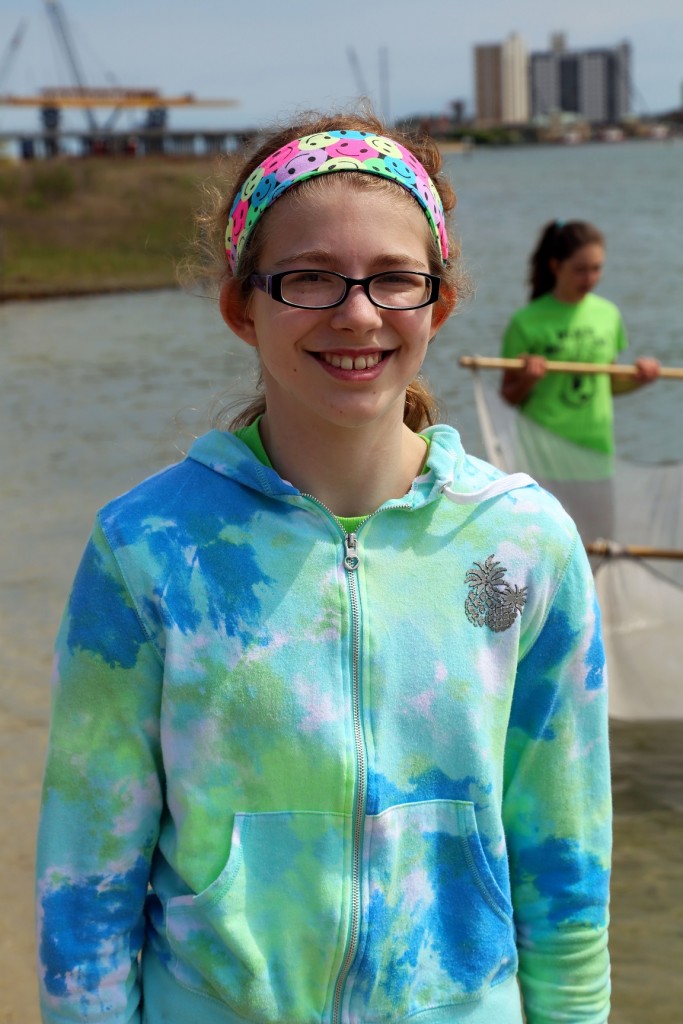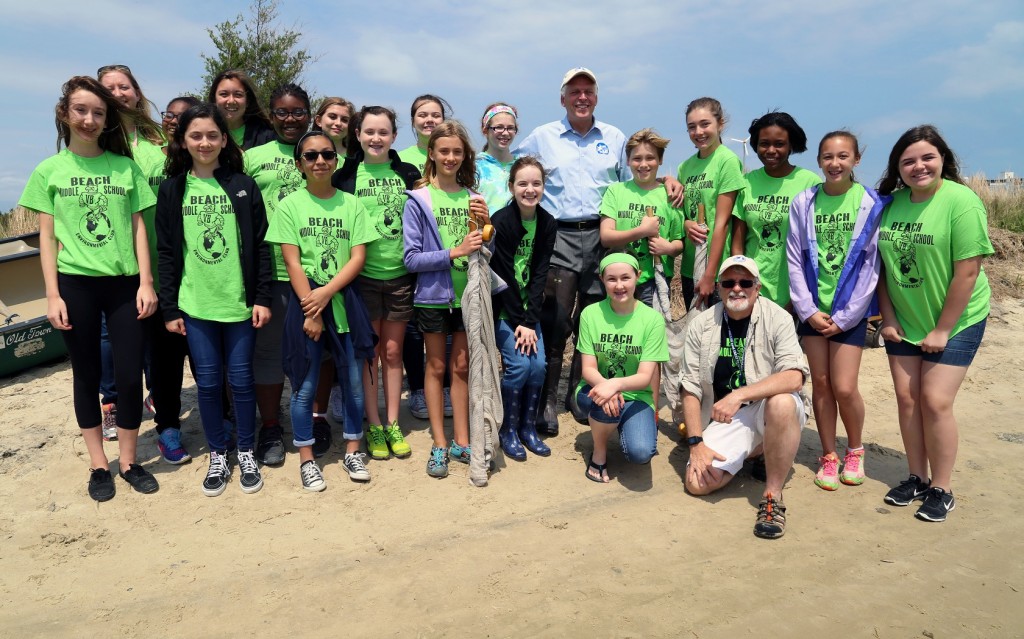“Looks like you pulled in a small crab, is that a fish? Looks like a couple of jellies,” said science teacher Maurice Cullen as he looked into the seining net the students had pulled from the water. “Just another day in the classroom.”
Except, this was no ordinary classroom. Students form the Virginia Beach Middle School Environmental club were studying the Lynnhaven River from the shoreline of Pleasure House Point, home of the Chesapeake Bay Foundation’s (CBF) Brock Environmental Center.
“We’re in the middle of a yearlong project,” Cullen said. “The students are working with educators from the Chesapeake Bay Foundation to monitor and help determine the health of the Lynnhaven River.”
Cullen added that the group is doing a lot of different things to help evaluate the Bay.
“We’re seining for different types of animals which will tell us if the bay is healthy, that’s one of the things that the students are looking for,” Cullen said. “The more types of animal species we’ve got will help us determine that health.”

The environmental club visits Pleasure House Point at least once a month and the students are discovering that their work is important.
“So, we’re using nets to capture organisms so we can tell how good the water quality is,” said seventh-grade student Charlotte Meador. “If the water quality is not good, some of the organisms could die and others would be affected because they all depend on each other to survive.”

Cullen said that the students are taking an active role.
“As part of our environmental club, we raise oysters on-site to be released on a reef later on in the Lynnhaven River and that’s a good thing. Oysters are a great filter for the bay. We also have some people working with water quality, which will tell us how good the oxygen is in the water, we monitor the temperature of the water. We test for water clarity, the water is actually pretty clear today. So a lot of things are pointing to a very healthy section of river here by the Brock Environmental Center.”
Also on display were crabs, eels and other river and bay life found in the seining nets. Students prepared those displays to share with a special guest that day, Virginia Governor Terry McAuliffe.

To the students, this environmental project is a perfect example of hands on and lifelong learning, lessons they will carry for a lifetime.
“A lot of the students don’t have very many outside experiences or outdoor experiences, so they’re very excited to come out here as often as we do,” Cullen remarked. “We go to our oyster site and at school we go out to our rain garden area, we have a butterfly garden also. To do this and be this hands on, nothing can beat it, nothing. They’re getting so much out of this, it’s unbelievable and it’s something they’ll always remember.”
